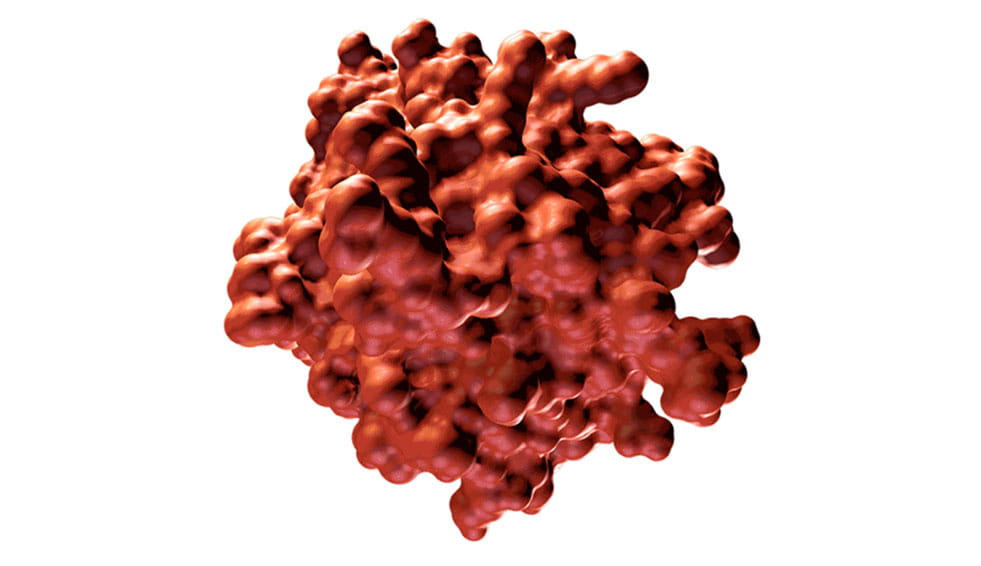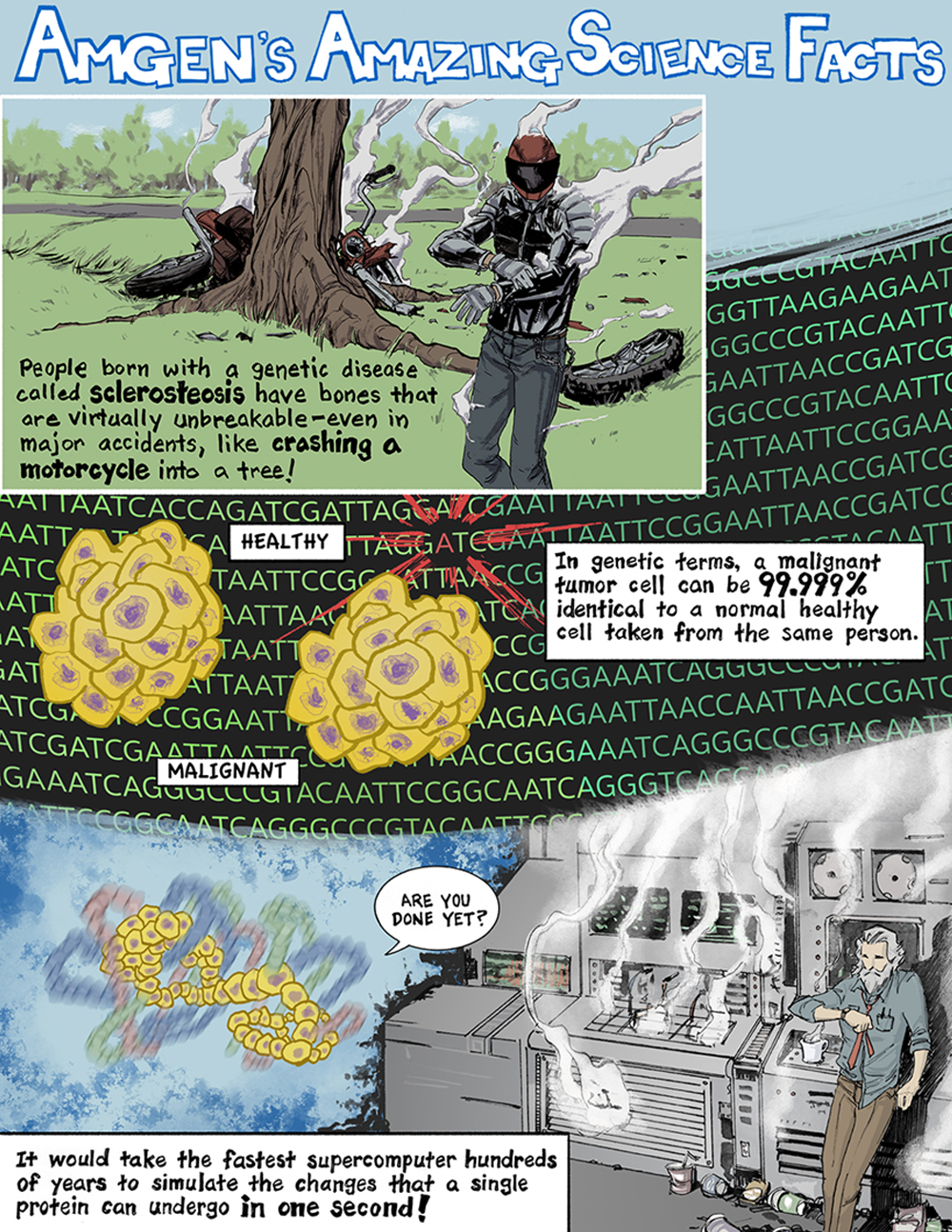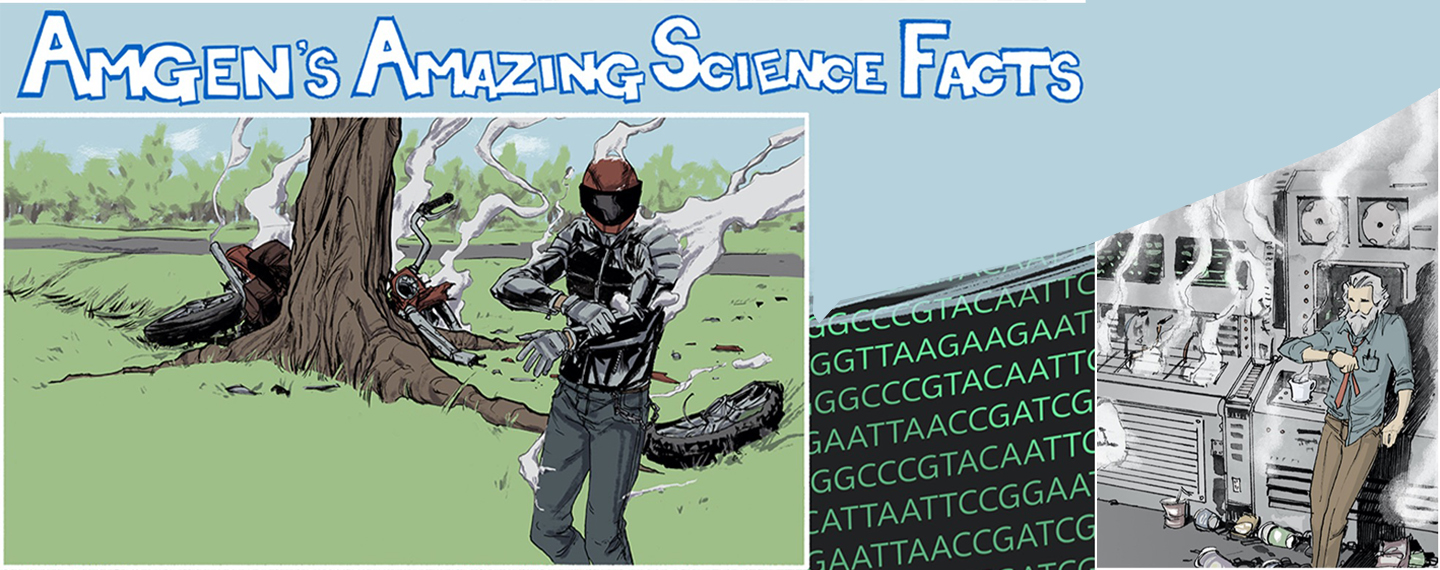In genetic terms, a malignant tumor cell can be 99.999% identical to a normal healthy cell taken from the same person.
When medical illustrators depict cancer cells, they usually try to make them look scary and sinister, like this illustration below:

Unfortunately, real tumor cells are difficult to selectively target because they are astonishingly similar to the healthy cells they threaten. If you compare the DNA codes of two people who aren’t related, on average there will be one difference for every 1,000 base pairs. But if you compare a tumor cell with a healthy cell taken from the same person, the differences in the DNA may be less than one nucleotide in every 100,000. But these small differences can have a big impact if they disrupt the protein mechanisms that regulate normal cell growth.
The overall genetic similarity between tumor cells and normal cells makes it challenging to design cancer drugs that will hit tumor cells hard but leave healthy cells mostly unscathed. It’s also one of the reasons the immune system often fails to recognize and attack tumor cells. But improved methods for sequencing DNA and RNA are helping scientists to pinpoint subtle differences in tumor cells and design medicines that target cancer directly or by enlisting the immune system.
It would take the fastest supercomputer hundreds of years to simulate the changes that a protein undergo in one second.
When biology wants to get something done, it almost always assigns the job to a protein. That’s why nearly every drug made is designed to bind to a protein target and change the protein’s behavior in order to treat disease. In scientific papers and presentations, you often see images of proteins like the one below:

What an image doesn’t capture, though, is that proteins can be incredibly dynamic. They don’t sit still but constantly change their shape—sometimes dramatically—as the atoms in the protein interact with each other or with atoms in their surroundings. The result is a whirl of motion akin to a cartoon Tasmanian Devil, but trillions of times faster.
A conventional supercomputer would need months to calculate just a few millionths of a second of protein behavior and interactions. Newer systems designed specifically to simulate molecular dynamics can do the same work much faster, but they are still very limited in the length of the simulations they can perform in a reasonable time frame. Even though they can now do in days what used to take months on a conventional supercomputer, the fastest of these dedicated computers would still take hundreds of years to simulate a full second of protein behavior.
Fortunately, even at this time scale, there is still a lot you can learn. In some cases, simulations have revealed that proteins that looks undruggable in their most common shape can briefly assume other shapes that would allow drug molecules to penetrate their defenses.
People born with a genetic disease called sclerosteosis can have bones that are virtually unbreakable—even in major accidents, like crashing a motorcycle into a tree!
Sclerosteosis is a very rare condition caused by a lack of a functioning gene for a protein called sclerostin. This protein functions like an off switch for the body’s bone-building cells, and without it, the body keeps building bone tissue until the bones become extremely dense. People with this rare condition have been known to walk away from major accidents, like car and motorcycle crashes and serious falls, without so much as a fracture. But the condition also causes serious health problems over time as excess bone growth gradually impinges on other critical biological functions.
Rare genetic conditions like sclerosteosis and familial hypercholesterolemia (abnormally high LDL cholesterol levels) can shed light on more common forms of disease by revealing the genes and proteins that play a large role in normal biology. Drugs that target key proteins identified through genetic mutations can help to modulate biology in ways that treat disease and improve health.






